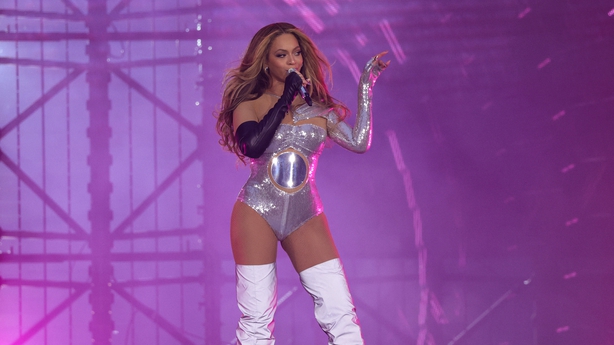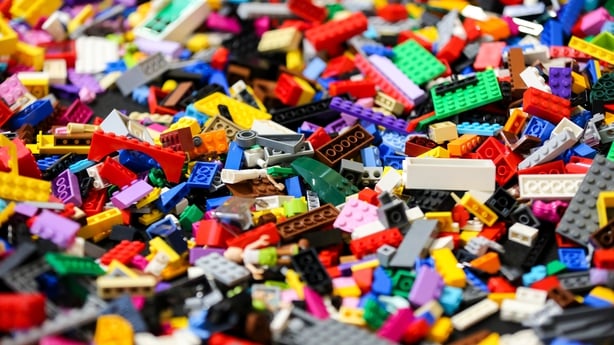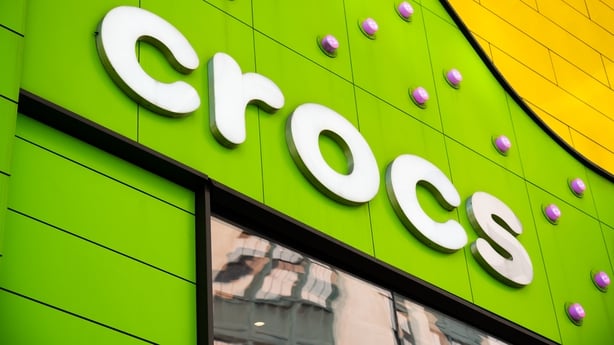Celebrity endorsements are nothing new.
The oldest one on record dates back to 1882 and, realistically, very little about them has changed in the intervening 142 years.
Just as was the case for Lillie Langtry and Pears Soap, a modern endorsement deal is essentially about a celebrity being paid to appear in an ad - or turn up to an event – in the hopes that the brand will benefit from the reflected glow of their popularity.
But while endorsements still have their place, consumers are much more savvy now than they were in the 19th century.
Nowadays we know these endorsements are transactional – we know the celebrity is being paid to be linked to the product, and we know that that doesn’t necessarily mean they actually use or even like the goods.
This has led to the growth of a far deeper form of brand-celebrity tie-up; the collab.
Unlike endorsements, collabs put the celebrity into the product-making process (or, at least, suggest that they do).
That might be in the form of products that they helped design, or were designed based on their tastes and preferences.
Or, at the very least, represent a line of goods that the big name 'curated’ or approved.
So why have collabs become so popular?
We need your consent to load this rte-player contentWe use rte-player to manage extra content that can set cookies on your device and collect data about your activity. Please review their details and accept them to load the content.Manage Preferences
It’s plain to see just how powerful a celeb’s decision-making can be.
If Taylor Swift is spotted wearing a jumper, the world’s Swifties will immediately undertake a forensic analysis of the item, identify who made and have it sold out globally within minutes.
And the internet is littered with stories of small designers or producers being bombarded with orders because a celeb gave them a shout-out on social media, or was simply seen wearing or using something they made.
As a result, brands have seen the often phenomenal value in being able to say that their product is something a person’s favourite singer or actor wears, or would wear.
As an added bonus, collaborating with a celebrity is a much better way for a brand to tap into the social media influence they would have.
After all, they probably won’t tweet or Insta about an ad they appear in – but they will take to their platforms to talk about the new line of runners or jewellery they designed.
And what’s in it for the celeb?
Well, obviously money.
Just like endorsements, collabs can come with a hefty price tag. The bigger the celebrity the bigger a fee they can command when working with a brand, too.
But, unlike endorsements, some may also be able to negotiate a cut from sales of ‘their’ goods, rather than just getting an upfront sum.
However endorsements can also be a brand-building exercise for the celebrity.
It can allow them to project a new side of themselves beyond their core job – perhaps as being creative, a style leader, or food fanatic.
And what brands they team up with can tell you a lot about their influence, and their target audience.
A collab with a high end or luxury clothing brand tells you a different story to a collab involving a high street or discount chain.
But another benefit for public figures is that a collab allows them to expand their own little empire at minimal risk.
If they were to try and launch their own product line they would have to undertake a lot of work, do a lot of planning and spend a lot of money.
If it flops, that’s a financial and reputational cost.
But if they just piggy back on an already successful company, who has a better idea of how the industry works, it’s a much safer bet.
It’s also easier to walk away from if it fails – that line of products can just be discontinued.
So what are some of the more successful collabs out there?

Well pretty much every big brand – and even retailer – has some kind of collab going on at the moment.
That includes major fashion houses, all the way down to the likes of Penneys and BooHoo.
And they’re not confined to major celebs, either… some former Love Island contestants are cashing in on the trend too.
In terms of the big names – Beyoncé worked with Balmain for a line of clothing inspired by her last album, Renaissance.
Which really shows the cross-promotional potential of these tie-ups.
Dua Lipa also designed a line of summer clothing for Versace last year – while Billie Eilish worked with Nike on a number of versions of their Alpha Force runners.
But maybe the best collaborator of all is one you wouldn’t immediately think of.
Snoop Dogg is more of an ad-man than a rapper nowadays, and part of that includes a lot of very successful collaborations.
He’s collaborated with the wine brand 19 Crimes – which has a particular blend called Cali Red that was allegedly selected by the man himself. It also has his picture on the label.
He’s also worked with Skechers on a number of runners – which has been hugely lucrative for him, and the company, because it opened them up to a whole new market that wasn’t interested in the brand until Snoop came on board.
And that collaboration came about because of what is perhaps Snoop’s greatest tie-up… not with a brand, but with a person.
Snoop’s linking up with wholesome TV chef Martha Stewart may seem like chalk and cheese, but it’s been a huge success.
They’ve co-hosting a show together, launched a line of weed-friendly bags, and starred in a series of ads for Bic lighters.
All things that are sure to have been very lucrative for both.
Do brands team up too?

Yes brands are increasingly collaborating, either to make the most of their respective areas of expertise, or to create entirely new, mash-up products.
And some of these make perfect sense – for example Ikea collaborated with speaker-maker Sonos to produce some wireless speakers and accessories that fit into its design aesthetic.
It’s also worked with Lego to make some storage options that fit with its bricks.
Adidas collaborated on a line of clothing with home fitness equipment maker Peloton which, again, makes sense.
A few years ago customers also started seeing some interesting collaborations in the chocolate aisle – for example, Cadbury started cramming Oreos and pieces of Diam bar into various products.
What was actually happening there, though, was that Cadbury had been bought by Kraft – now known as Mondelez – which already owned the Oreo and Diam brands.
So really it was just a conglomerate trying to squeeze more value out of its various brands.
Another seemingly logical tie-up is one between a hotel company and a mattress company – though some might have some logical price tags involved.
For example the Corinthia Hotel in London recently announced a partnership with Swiss mattress maker Hӓstens, which is the mattress brand of choice for Drake, in case you were wondering.
The hotel deal will see its Maranga mattress being used in the Corinthia’s 35 suites.
You’re looking at spending €1,000+ to stay for one night in one those suites – but in return you’ll get to spend the night on a €20,000+ mattress.
These brand tie-ups don’t always make much sense, though, do they?

No – sometimes they’re just downright odd.
For example, lip-balm maker Burts Bees once launched a ranch dressing-flavoured variety.
That actually started out as an April Fool’s gag, but it got such a positive reaction they decided to make it for real.
Nike has made a line of Ben and Jerry’s themed runners.
Meanwhile Crocs has gotten involved in all sorts of strange mash-ups and collaborations.
It’s worked with KFC to make some fried chicken-themed crocs – it’s also worked with musicians like Justin Bieber and Post Malone to design new styles.
And, perhaps strangest of all, there’s even been a Crocs / Balenciaga cross over – which included a high heeled Croc.
What’s the appeal here?
Often these weird brand mashups aren’t as much about selling products as they are about drumming up publicity.
Because if you announce some weird product line – maybe as a limited edition thing – you’ve a good chance of having it go viral.
And you get multiple hits on that virality – from people reacting to the announcement, to people posting pictures and videos when they get their hands on the product.
And a lot of brands nowadays are keen to show the world that they’re able to be fun – and maybe willing to poke fun at themselves.
There’s also a kind of post-ironic element to it – with companies trying to blur the lines between something that’s a serious product, and something that’s a joke.
So the mash-up itself might not make them much money – but it can help get them lots of free publicity and goodwill for the brand in general.
Collabs can back-fire, though, can’t they?

Absolutely – maybe one of the longest running collabs ever was one between Lego and Shell; that lasted more than 50 years and saw Lego sell Shell-branded sets, including petrol stations and oil trucks. Often they were available to buy in Shell’s own petrol stations.
But while that might not have seemed like a big deal when the tie-up started back in the 1960s, by the 21st century – with the growing distress over the impact fossil fuels were having on the environment – it looked very different.
Despite that it still took a lot of pressure from Greenpeace before Lego finally decided not to continue the relationship – they ended their link with Shell in 2014.
Another disaster was Ungaro’s hiring of Lindsay Lohan as a designer around 15 years ago.
But her first clothing line was dubbed a disaster and cheesy – and was a total flop. To the extent that it put a lot of brands off these kinds of collaborations with celebs until recently.
But maybe the most expensive disaster of all was Kanye West’s deal with Adidas – which saw the production of the hugely popular Yeezy line of runners.
In fairness, the deal was very lucrative for all parties for a long time.
At its height, the Yeezy line was thought to be bringing in $2 billion in revenue for Adidas each year.
But when Kanye West started posting antisemitic messages on social media, the sports brand decided it was time to walk away from the rapper.
That left it not only with a huge hole in its finances – Yeezys were worth roughly 7-10% of its annual sales, so they had to slash their profit forecast and their dividend to shareholders.
But they also had to deal with €1.2 billion worth of unsold stock – that, at one stage, they were considering destroying.
In the end, though, they decided to sell off the stock instead – and donate some of their profits to anti-hate charities.
There was huge demand for goods too – in part because fans knew there wasn’t going to be any more Yeezys to come in the future.







